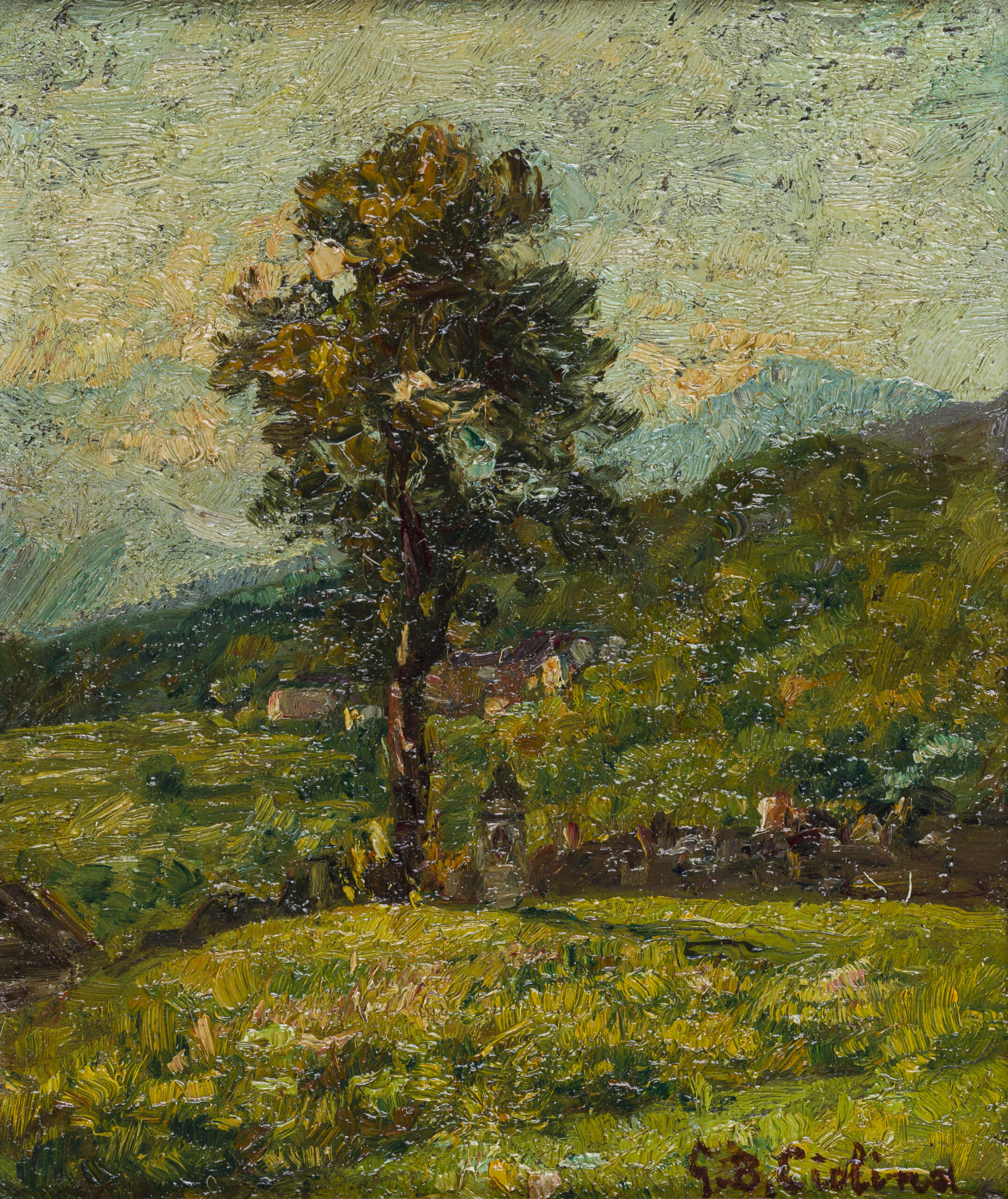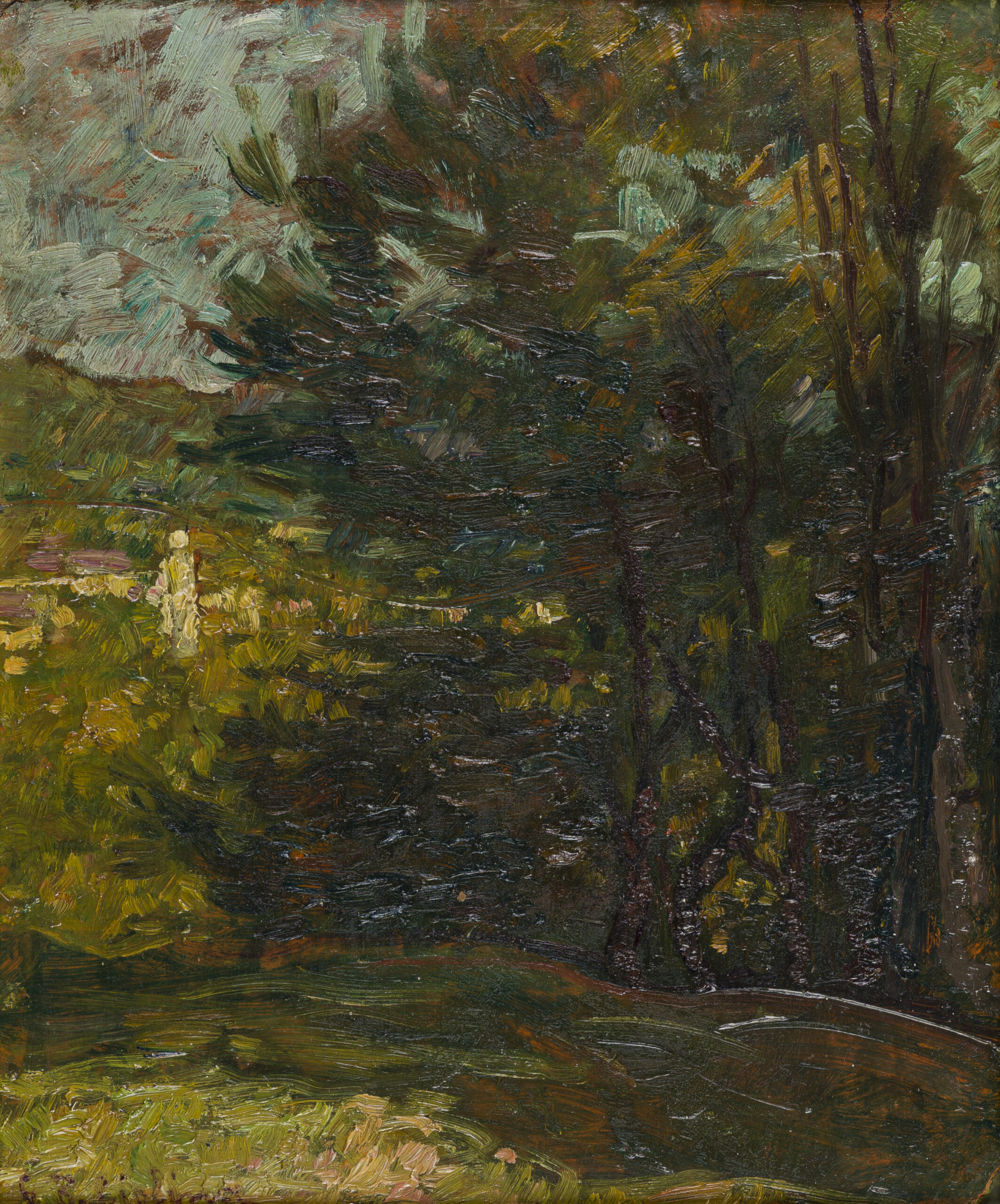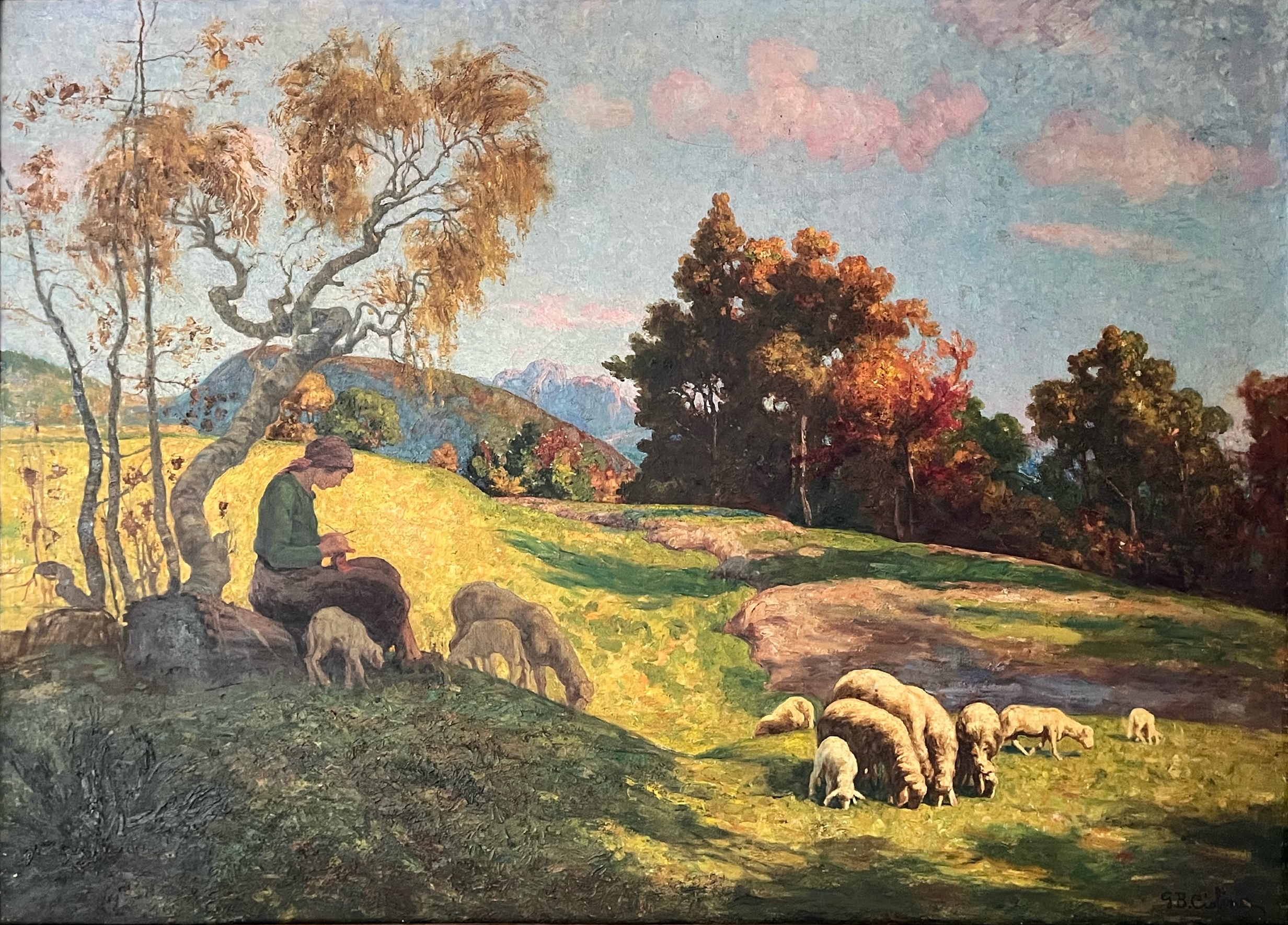It is absolutely necessary to live a lively, energetic life, and to partially acquiesce with what the body demands, because it is utterly absurd to believe that it is merely a tool of the spirit. (…) The mind and body are intertwined; there would be no mind without the body, and vice versa (…). That is why one must give equal care to the body as one does to the mind, keeping it constantly engaged in physical exercise, so that the whole person is in a constant state of loose vitality, ready to spring into action as soon as a thought conceives a will. It is important to provide the body with all the necessities, diversions and rest it requires, in order to maintain a state of health and vigour. This will be of great benefit to the spirit itself.
March 1896 Giovanni Battista Ciolina’s diaries. Transcribed by Paolo Ciolina



CRITICAL ANALYSIS
When, at the beginning of the 20th century, Ciolina painted the series Stagioni in valle Vigezzo (Seasons in the Vigezzo Valley) for Senator Alfredo Falcioni’s villa in Domodossola, he was constrained by limitations in the hall where they were to be placed and forced to reduce them to three: Autunno, Inverno e Primavera-Estate (Autumn, Winter and Spring-Summer). Nevertheless, he argued that he had adhered to reality in combining the two seasons of rebirth and the flourishing of nature, of which Buttogno in un pomeriggio di fine settembre (Buttogno on a Late September Afternoon) is a representation of rare beauty. The broad view of the valley, which the small size of the painting does not limit in the slightest, bursts with a clear light that the artist achieves through a vibrant, turbulent painting style, especially in the sky. There are no shadows to emphasise the volumes, except for the slender, almost invisible one of the tree trunk that dominates the composition whilst becoming the focal point through which the painter renders the space. Without it, the succession of slopes in light and shade, and the villages of Crana, which barely emerges, and of Buttogno, standing out in the distance, would appear flat and the work would lack depth.
As in many of his other works, the scene is constructed rather than described by clear brushstrokes, applied without any objective constraints in representing things, and left more to visual intuition than to the recognition of details, following the technique that Paul Cézanne had developed in the late 19th century. It is above all a representation of air and light, rather than things, which are reduced to a pretext, a vehicle to convey pure physical sensations. The dominant impression is of feeling the last warmth of summer on the skin amidst the gusts of a crisp breeze, of perceiving the scents of the imminent autumn in the clear September light, which is beginning to darken in the distant sky facing west.
In Ciolina’s later paintings, the technique used in Buttogno in un pomeriggio di fine settembre, is developed with greater freedom and broad, constructive brushwork, often revealing the underlying colour, as is evident in Mattina di settembre, (September Morning), painted eleven years later (1951). Here, the technique of alternating planes in light and shadow appears with striking clarity and constructs the scene through opposing masses with admirable skill. The large, dark mass of trees pierced with yellow and reddish-brown makes the view of Toceno, dominated by the bell tower and the church in full light, even more vibrant. The same light explodes in the foreground and in the bottom left corner and makes the undulating meadow of muted greens and reddish-brown even more dazzling. It is incredible how the combination of free, almost unnatural colour, and the seemingly loosely applied brushstrokes, which is actually the result of masterly technique and extraordinary skill, effectively portray a landscape where not one square centimetre is realistically depicted but is in fact just pure painting.
The contrast between Mattina di settembre and Pastorella con pecora al Ranton, (Shepherdess with Sheep in Ranton), which Ciolina’s son Paolo dated to 1951, couldn’t be starker. It seems more reasonable to assign the work to the 1920s, not so much for the subject or the figure of the shepherdess, which appears identical to that in the watercolour La Catrelo che fa la calza from 1914, or even for the contorted, almost unnatural shape of the birch tree towering over it, an evident homage to the symbolism of Segantini’s Le cattive madri (The Bad Mothers -1894), but rather for the painting technique. Here Ciolina applies colour with a more troubled touch, almost blending it on the canvas, recalling the petite tache technique he learned in his youth from Enrico Cavalli. This allows the light to vibrate on the yellow meadow as well as on the rocks and trees, which are already tinged with autumnal tones. The formation of planes in light and shadow, appears more mature, yet rendered in different ways: in sharp contrasts in the group of sheep, the long strokes on the meadow and rocks (created by the trees? or the clouds?) and the vegetation in the background, yet soft with almost muted tones in the group on the left with the seated woman, the two sheep and the meadow in the foreground, painted in a watery, almost grey-green, which complements the distressed, robust trunk of the birch tree.
Text and image research and adaptation by Chiara Besana.
Critical analysis by Paolo Volorio.
Sign up to receive news on events, exhibitions and trainings from the Rossetti Valentini School of Fine Arts Foundation.
Iscriviti per ricevere le news su eventi, mostre, incontri di formazione organizzati dalla Fondazione Scuola di Belle Arti Rossetti Valentini.